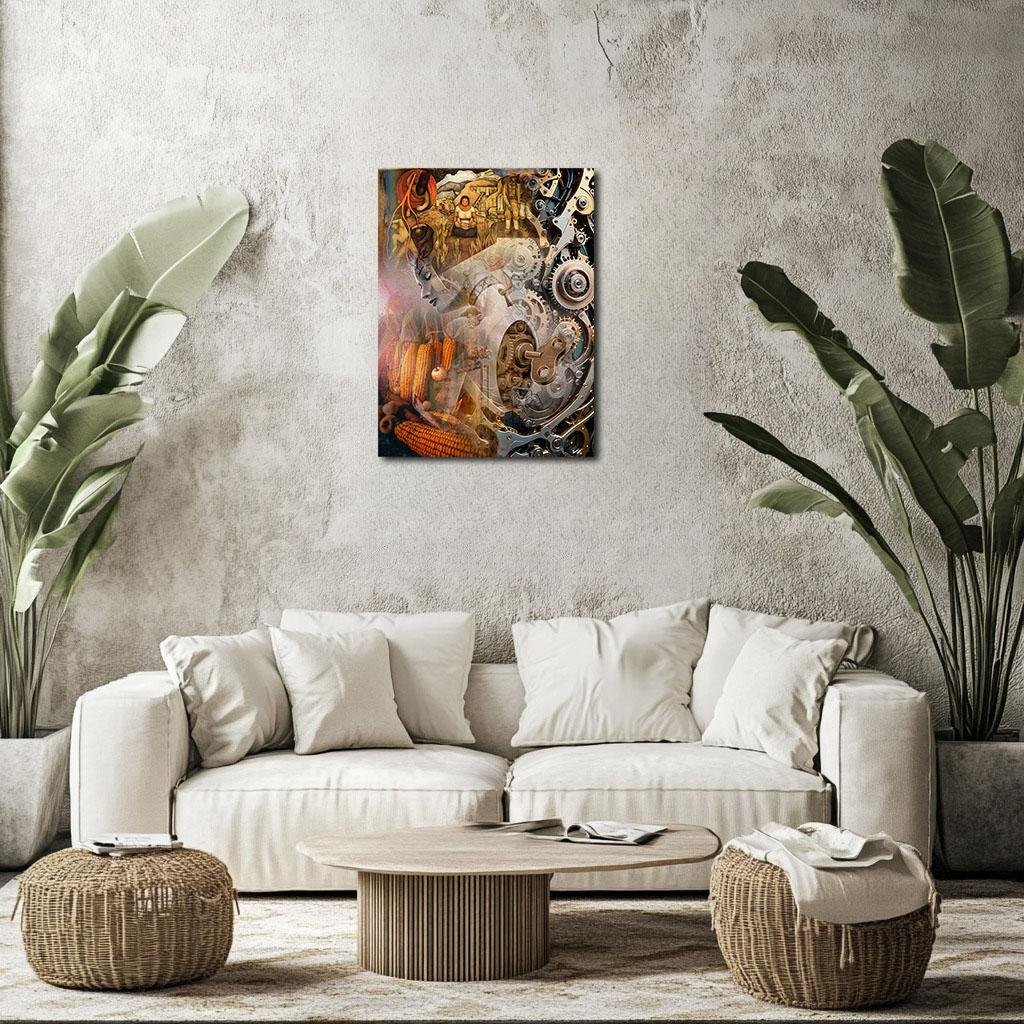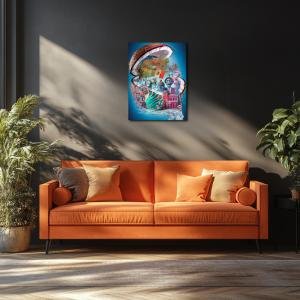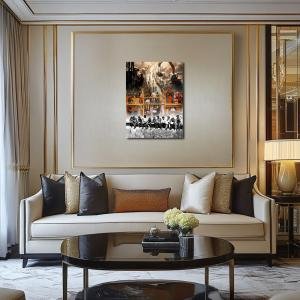The Clockwork Field: A Requiem for Rural Breath
The Clockwork Field reimagines Diego Rivera’s Mechanization of the Countryside as a symbolic fusion of rural tradition and mechanical evolution. Golden maize and stoic farmers melt into gears and cogs, where color shifts from earthen warmth to industrial silver. A woman’s form embodies this metamorphosis—half soil, half steel. Through surreal abstraction and metallic tension, this piece mourns the fading rituals of the land, transforming Rivera’s agrarian reverence into a meditation on memory, machinery, and the mechanized pulse of progress.
Please see Below for Details…
Hotline Order:
Mon - Fri: 07AM - 06PM
404-872-4663
This reimagining of Diego Rivera’s Mechanization of the Countryside arrives as a meditation on transformation—how the heartbeat of the earth becomes the ticking of a machine. Titled The Clockwork Field , this piece blends the organic pulse of Rivera’s agrarian ideal with the unyielding precision of industrial progress. Through juxtaposed elements—corn stalks and cogs, farmers and gears, flesh and chrome—this visual dialogue captures a haunting question: what is lost when the soil speaks in metal?
In Rivera’s world, land was sacred—alive with labor, sweat, and growth. Here, that same land is interrupted, its yield processed not by hands, but by hands turned into mechanisms. A woman’s serene face, half-veiled in shadow, holds the center of the canvas—a goddess of both fertility and function. She is not broken but transformed. Her form bends into cogs, levers, and clockwork interiors. Her touch once stirred soil; now it adjusts pressure valves and gear tension. This is not dehumanization—it is a surreal reconciliation between body and machine, a poetic merging of breath and bolt.
In the upper left, Rivera’s original imagery of rural peasants remains almost untouched—a tribute to the past. Farmers lean over golden maize, the earth generous, the sun impartial. But even here, cracks form. Above their heads, mechanical vines descend. A large metallic wind-up key twists through the center of the composition like a mechanized root system. The agrarian becomes artificial. The cycle is no longer sow to harvest, but press to process.
Color functions in this work as a gradient of dissonance. The left half of the composition glows with Rivera’s palette—rich ochres, earthy browns, and deep sunlit oranges. These tones recall soil, maize, and handmade garments—the texture of tradition. The corn in particular radiates warmth and legacy. This part of the image feels full, fed, and sung. But as the eye moves right, the palette shifts dramatically.
Industrial steel begins to dominate—grays, silvers, and chromes layered with precision and cold intent. These tones are not dull; they gleam with purpose, yet they reject the warmth of Rivera’s world. The gears are hyper-detailed, their mechanical logic overtaking the softness of soil. Color here becomes a metaphor for pace: the more metallic the hue, the faster the rhythm, the further from nature. There is no blue sky—only the glare of polished surfaces. This is not the future—it is a clock without a sky.
Amidst this mechanical crescendo, small moments of humanity persist. A childlike profile etched softly behind the gears. The quiet curve of a neck. These fragile suggestions of organic form remind the viewer that the countryside, mechanized or not, was once a place of lullabies and hands washed in rainwater. But now, the song is syncopated with pistons.
When I created The Clockwork Field , I wanted to echo Rivera’s admiration for the rural laborer but cast it against a shadow of inevitability. Mechanization is not painted here as villain or savior—it is simply movement. But this movement costs intimacy. It replaces cycles with sequences, rituals with routines. My aim was not nostalgia but tension: a visual record of what happens when human rhythm is drafted into mechanical cadence.
Rivera painted to affirm life through work. I wanted to question what life becomes when work is streamlined beyond soul. The farmers are still here. The fields still bloom. But now, every plant has a hinge, every harvest a gear ratio. This is not dystopia—it is history filtered through reverence and regret. A hymn of hands now wound by key.
Add your review
Your email address will not be published. Required fields are marked *
Please login to write review!
Looks like there are no reviews yet.








